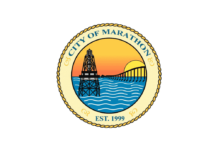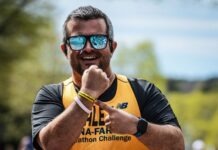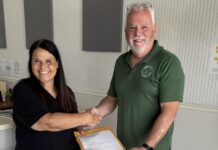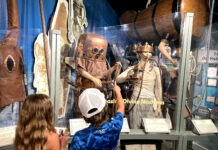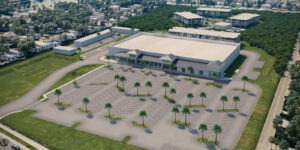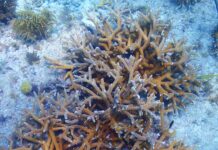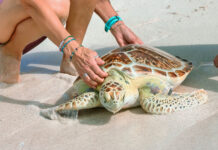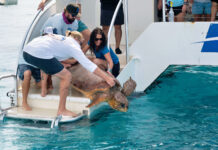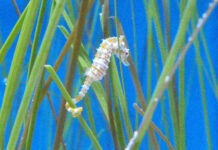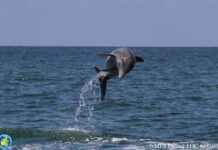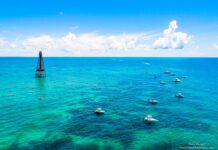
Monroe County’s first artificial reef in its new, 100% grant-funded program is now complete, and sea life can already be found in abundance in the area.
Earlier this month, the rest of the donated concrete power poles were delivered and set on the bottom at the Gulfside 10-Mile Artificial Reef site, 10 miles off Key West in federal waters. This completes the power pole artificial reef project, which started in November 2024 with the deployment of nine poles to Patch Reef #1, 21 poles to Patch Reef #2, and the last 20 poles to Patch Reef #3.
At each patch reef, the concrete poles – 35 to 55 feet long – were stacked in perpendicular layers to maximize vertical relief and create various habitat spaces for marine life. The reefs range from 6 to 12 feet high, are about 65 feet in diameter, and are at a depth of about 40 to 45 feet. The poles were obtained from the Florida Keys Electric Co-op’s Sea Oats Beach project in Islamorada and the Monroe County Land Steward.
This will be part of a network of artificial reef sites in this area. The “Gulfside Network” will provide new fishing and diving opportunities, waypoints for migrating marine life and, long-term, marine habitat. It may also help reduce pressure on natural reefs. Site surveys and permit applications are underway for the other sites in the network. Multiple patches and sites will help disperse fishing pressure and reduce human user conflicts.
“I was thrilled to see the great diversity and abundance of marine life using these structures,” said Hanna Koch, director of artificial reefs for Monroe County, who surveyed the sites with state wildlife scientists recently. They reported dozens of fish species, including a variety of snappers and groupers, thousands of fish ranging in size from a few inches to several feet, nurse sharks, sea turtles, dozens of invertebrate species and numerous large egg masses. “You could clearly see how the different organisms were using the variety of spaces in the reef, whether it was a large shark resting under a ledge, small fish schooling in the shallow cracks between the layers, or medium-sized fish hiding in cavities,” she said.
Koch will monitor these patches and the rest of the sites once they are completed to understand how humans and marine life are using them. She asks divers to relate their experiences at these reefs, at koch-hanna@monroecounty-fl.gov or via voicemail at 786-847-5443.
The coordinates for each patch reef:
Patch Reef 1: 24° 53.1945′ N, 81° 42.20448′ W
Patch Reef 2: 24° 53.1174′ N, 81° 42.1362′ W
Patch Reef 3: 24° 53.058’ N, 81°42.062’ W





